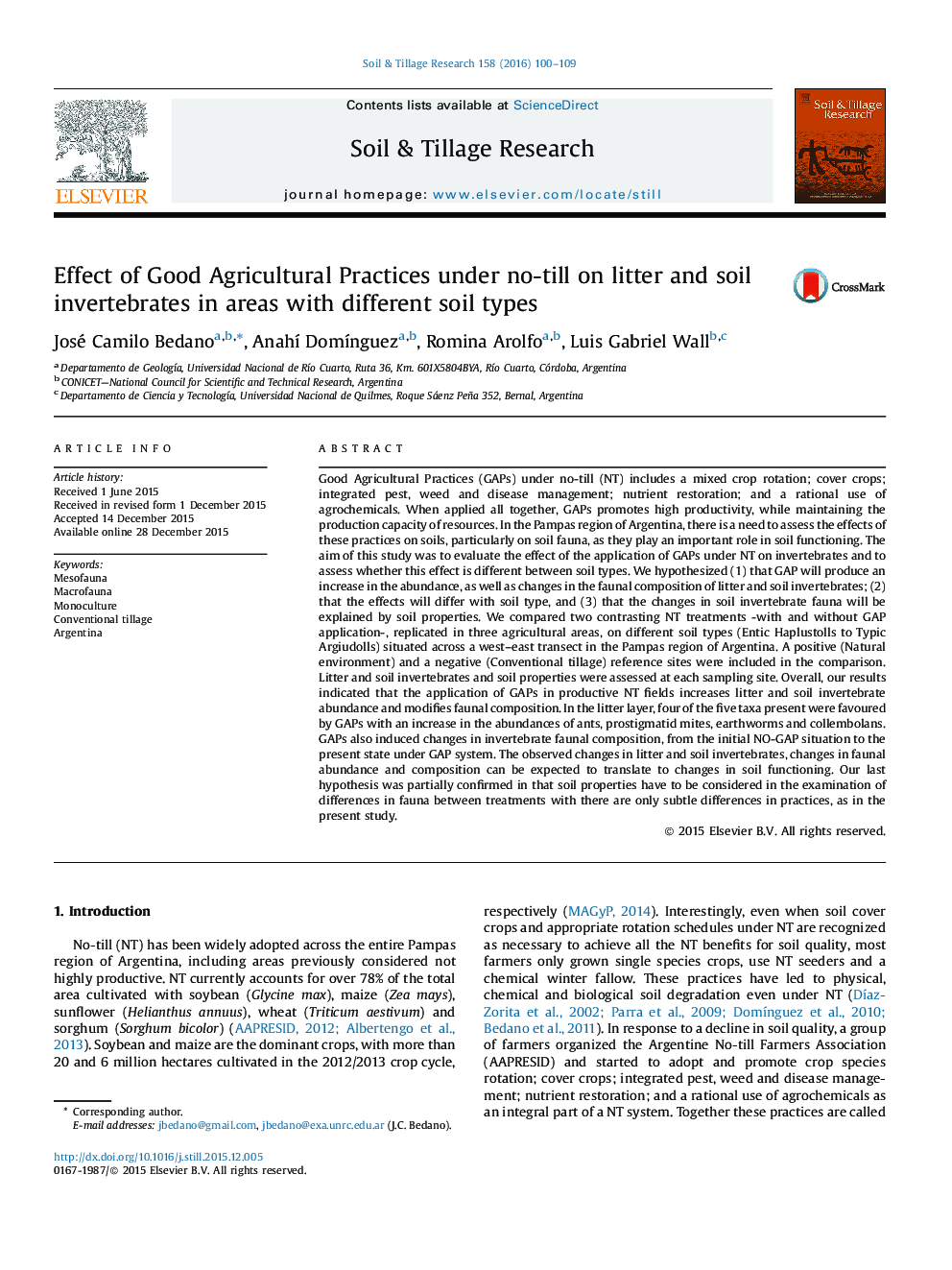| کد مقاله | کد نشریه | سال انتشار | مقاله انگلیسی | نسخه تمام متن |
|---|---|---|---|---|
| 305419 | 513028 | 2016 | 10 صفحه PDF | دانلود رایگان |
• We evaluated the use of Good Agricultural Practices (GAPs) in productive no-till fields.
• GAPs increased litter and soil invertebrate abundance and modified the faunal composition.
• The effects of GAPs were different according to soil type.
• Litter and soil invertebrates were good indicators of GAP application.
Good Agricultural Practices (GAPs) under no-till (NT) includes a mixed crop rotation; cover crops; integrated pest, weed and disease management; nutrient restoration; and a rational use of agrochemicals. When applied all together, GAPs promotes high productivity, while maintaining the production capacity of resources. In the Pampas region of Argentina, there is a need to assess the effects of these practices on soils, particularly on soil fauna, as they play an important role in soil functioning. The aim of this study was to evaluate the effect of the application of GAPs under NT on invertebrates and to assess whether this effect is different between soil types. We hypothesized (1) that GAP will produce an increase in the abundance, as well as changes in the faunal composition of litter and soil invertebrates; (2) that the effects will differ with soil type, and (3) that the changes in soil invertebrate fauna will be explained by soil properties. We compared two contrasting NT treatments -with and without GAP application-, replicated in three agricultural areas, on different soil types (Entic Haplustolls to Typic Argiudolls) situated across a west–east transect in the Pampas region of Argentina. A positive (Natural environment) and a negative (Conventional tillage) reference sites were included in the comparison. Litter and soil invertebrates and soil properties were assessed at each sampling site. Overall, our results indicated that the application of GAPs in productive NT fields increases litter and soil invertebrate abundance and modifies faunal composition. In the litter layer, four of the five taxa present were favoured by GAPs with an increase in the abundances of ants, prostigmatid mites, earthworms and collembolans. GAPs also induced changes in invertebrate faunal composition, from the initial NO-GAP situation to the present state under GAP system. The observed changes in litter and soil invertebrates, changes in faunal abundance and composition can be expected to translate to changes in soil functioning. Our last hypothesis was partially confirmed in that soil properties have to be considered in the examination of differences in fauna between treatments with there are only subtle differences in practices, as in the present study.
Journal: Soil and Tillage Research - Volume 158, May 2016, Pages 100–109
